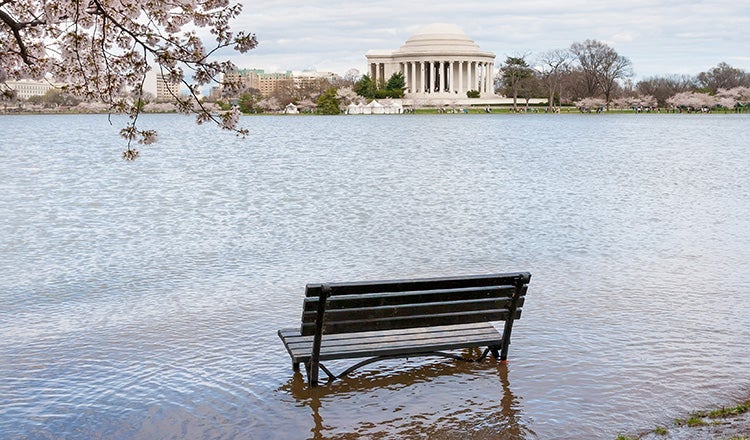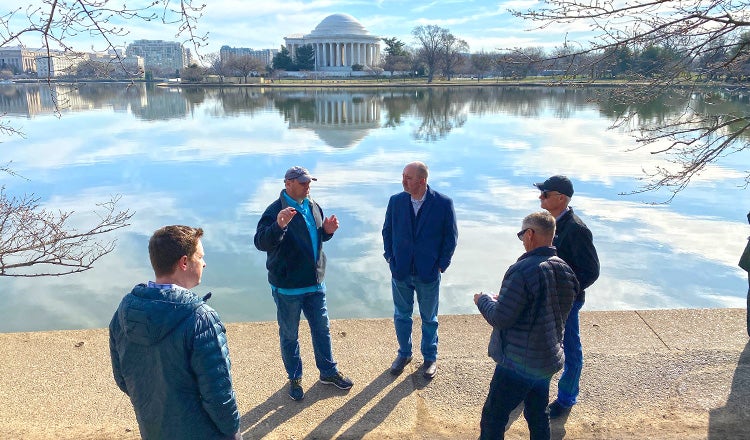National Mall and Memorial Parks Seawall Rehabilitation – Phase 1

National Mall and Memorial Parks Seawall Rehabilitation – Phase 1
Seawall Design to Protect National Treasures
Seawalls protect many of the United States’ iconic sites built near the Potomac River in Washington, D.C. But these structures — shielding the Jefferson Memorial, the Franklin Delano Roosevelt Memorial, the Japanese Pagoda, Potomac Parks and more — have slowly settled and weakened. HDR, as the lead firm of a design joint venture, is providing a wide selection of engineering and support services to the National Park Service in the rehabilitation of these important seawalls.
Historic Rehabilitation
The seawall systems at these locations in the nation’s capital date from the late 1800s to early 1900s, with major sections replaced in the 1930s and 1940s. In the decades since construction, some portions have settled as much as 5 feet, leading to daily overtopping by water. This causes damage to the seawalls as well as hazards to visitors.

To remedy this situation, the National Park Service began a program to rehabilitate the historic seawalls in many parks in the National Capital Region, including the Tidal Basin and along the Potomac River. HDR is providing program management services, strategic communications, structural and civil engineering, geotechnical engineering, marine engineering, coastal modeling and architectural infrastructure design.
In the initial phase of the program, the design is focusing on the structures that protect the river frontage of West Potomac Park and a large section of the Tidal Basin, about 1.8 miles of seawall. Our team is providing schematic, 30% design that will be the basis used as the project moves into a design-build procurement, as well as providing compliance and permitting services.
Meeting Design Challenges
The high profile nature of the area, which attracts millions of visitors each year, is just one of the challenges. An aggressive schedule of about nine months and a complex approval process required building consensus among many stakeholders for the best solutions. Throughout, the team sought to strike the right balance between infrastructure protection and preservation of the cultural landscape and environmental resources of the Potomac River and the Tidal Basin.
Engineers also had to address the poor quality soils. The land that became West Potomac Park and a portion of the Tidal Basin was created with dredging materials from the Potomac River. The weak soils compress under heavy loads, which led to up to 5 feet of settlement under the existing seawalls. The long-term structural stability of the rehabilitated seawalls will be addressed by founding them on piles driven to bedrock. The improved structure will also help stabilize the upland areas by reducing erosion. This protects the historic cultural landscape, including the renowned Japanese cherry trees. The foundation also provides capacity to increases the seawall structure height to deal with future sea level rise.

Developing design schematics that can be used by future design-build teams requires balancing the specificity needed to ensure a high-quality design that meets the functional performance as well as protection of the cultural and environmental resources with the understanding that final design teams may want to adjust details to fit their preferred means and methods of construction
We engaged HDR’s large network of experts across North America to meet and exceed expectations, with staff involved from more than 30 offices in the United States and Canada. As the program moves into the next phase with a design-build procurement process, the foundation is set for protecting the interests of the National Park Service and these iconic sites long into the future.








